This is a fortnightly newsletter about the New Zealand Net. If you would like to be notified by email when a new edition is published, please contact ZL1NZ.
Browse our newsletter archive.
Featured key

Photo: Morse Express
Isn’t this a fabulous-looking key? It’s the Scheunemann Morsetasten Kleine Handtaste and it sold for US$269 at Morse Express. Here’s how they described it:
“The Schurr MMK has been reincarnated as the Scheunemann Kleine Handtaste or “Small Hand Key.” Actually a midsize hand key with a comfortable sculpted mahogany knob and a solid brass base, the Kleine Handtaste will sit solidly on the desk and provide hours of comfortable brass-pounding for the discerning operator. Scheunemann keys are supplied with an internally installed cable with striped/tinned leads for easy installation of a connecting plug.”
Unfortunately, the maker of these keys has retired. Morse Express is no longer in business, although their website remains a great resource.
* If you have an interesting key for this feature, please send me a nice clear photo and a few words describing it.
Quick notes
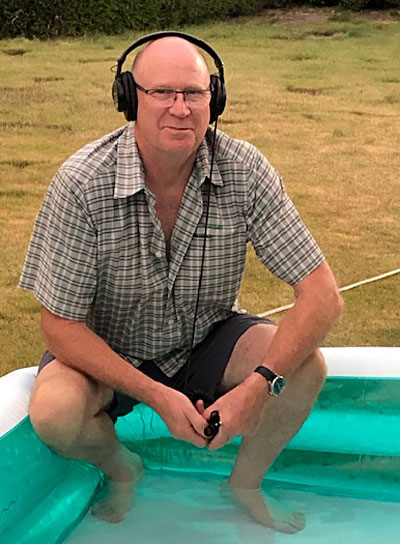
Happy Waitangi Day! Hope you enjoy the holiday. And, starting next year, we’ll have another holiday, in June for Matariki!
The Canterbury heat wave in the last week of January had Grant ZL2GD sweltering in a 38C shack. I asked him how he was coping, and he sent the photo of a pool he claims is for the grandchildren. 🙂
Paul ZL1AJY has been driving New Zealand’s economic recovery. In a single shopping trip, he picked up an IC-705 and an IC-7610 plus a remote tuner. When he checked into the Net for the first time with the 10-watt IC-705 we did a quick round of signal reports, all of which were quite good.
The 25wpm pre-Net chat at 2050 hours has been going well. Feel free to put out a CQ if you don’t hear anyone else.
Stephen ZL1ANY has been getting quite creative with his Monday evening trivia questions. The latest one had a nice rhyming pattern.
The 20m CWB (Communicators Without Borders) Net has resumed after a summer break. Check-ins are welcome, with or without traffic. The net is on 14349kHz at 0603Z.
The 500th session of the NZ Net is fast approaching. I hope you can join us on Friday 19 February to mark the occasion.
Net numbers
Many of our regulars have been on holiday the past few weeks, so the January numbers were low. We had 14 stations checking in a total of 126 times, and 31 pieces of formal traffic passed. February is likely to be quiet too, judging by last year, so please take a moment to check in whenever you can – and tell your friends about the Net.

NR9 R ZL1NZ 37/34 AUCKLAND 0800Z 1FEB21 = NZ NET = JANUARY QNI ZL1AJY 7 ZL1ANY 18 ZL1BWG 16 ZL1NZ 21 ZL1PC 2 ZL2GD 16 ZL2GVA 18 ZL2KE 10 ZL2LN 2 ZL2WT 8 ZL4CU 1 ZL4KX 1 ZL4LDY 5 VK4PN 1 TOTAL 126 QTC 31 = ZL1NZ
Photo flashback
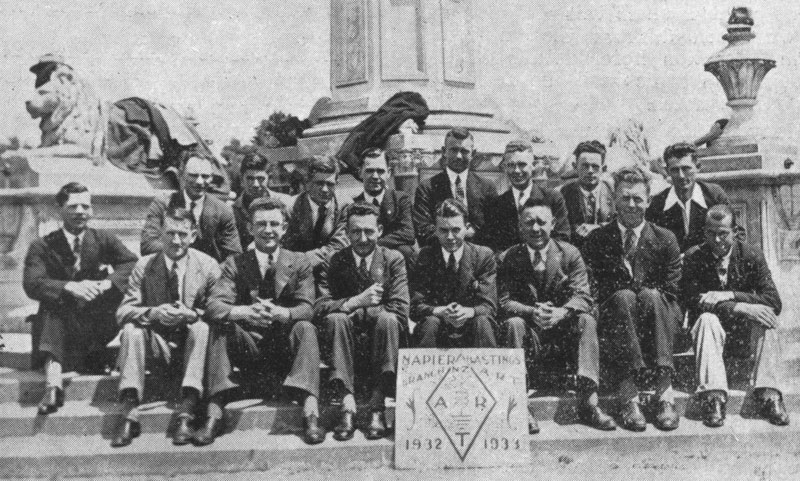
Napier-Hastings Branch, NZ Association of Radio Transmitters
Back row (left to right): M Pettifer ZL2KJ; S French ZL2JB; _ Crooks ZL2MQ; A Crabtree ZL2FQ; I Baird, JO Neill ZL2KT; A Robertson ZL2KM; H Roberts ZL2FY; E Beale ZL2AT
Front row (left to right): C Simpson ZL2KD; H Etheridge ZL2FW; FIR Hunt ZL2GQ (Vice-President); R Scott ZL2CR (President); GE Tyler ZL2GE (Secretary); RH King ZL2KI; LT Young ZL2KK.
Photo: Break-in Magazine, Dec 1932
Ninety years ago, on 3 February 1931, the Hawke’s Bay region was devastated by an earthquake of magnitude 7.8 on the Richter Scale. At least 256 people were killed, mostly as a result of collapsing buildings and massive fires.
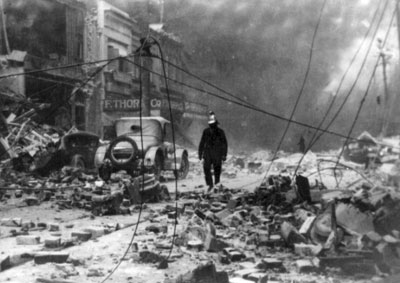 Telephone and telegraph lines were destroyed but radio amateurs provided vital communications. In some cases, their stations were commandeered by the NZ Post Office.
Telephone and telegraph lines were destroyed but radio amateurs provided vital communications. In some cases, their stations were commandeered by the NZ Post Office.
The quake, which remains New Zealand’s deadliest civil disaster, led almost immediately to the formation of the Radio Emergency Corps, now known as AREC.
Lee ZL2AL (SK) published a lot of interesting information on his website about the role of radio amateurs following the quake. Some of them are in the group photo.
Another good source of information is the book Ham Shacks, Brass Pounders & Rag Chewers, by Ian Dougherty.
Morse musing: learning the code
Our series continues, this time with Manny VK3DRQ recalling how he learned the Code. We’ll have more in future editions, but if you haven’t sent me your story yet, please do!
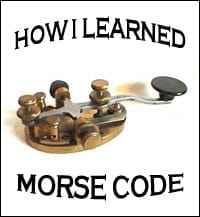 Many, many years ago, in late 1959, I was studying, by correspondence, for a Radio Technician Certificate. In one of the lessons came a little thing called a Morse Key, with the Morse alphabet and numbers.
Many, many years ago, in late 1959, I was studying, by correspondence, for a Radio Technician Certificate. In one of the lessons came a little thing called a Morse Key, with the Morse alphabet and numbers.
The first kit to be built was a sort of a vibrator to practice the code. For every letter of the alphabet, there was a word to be memorised. The sound of this word, when spoken slowly, corresponded to dashes or dots. For example, if the sound had three letters it would be a dash and less than three letters would be a dot.
- B was Bar-ce-lo-na (dah-di-di-dit)
- C was Cen-te-llan-te (dah-di-dah-dit)
- Q was Qui-qui-ri-qui (dah-dah-di-dah)
Yes, those last two are Spanish words meaning sparkly and the sound of a rooster. It sounds hard, but I did find it easy to remember.
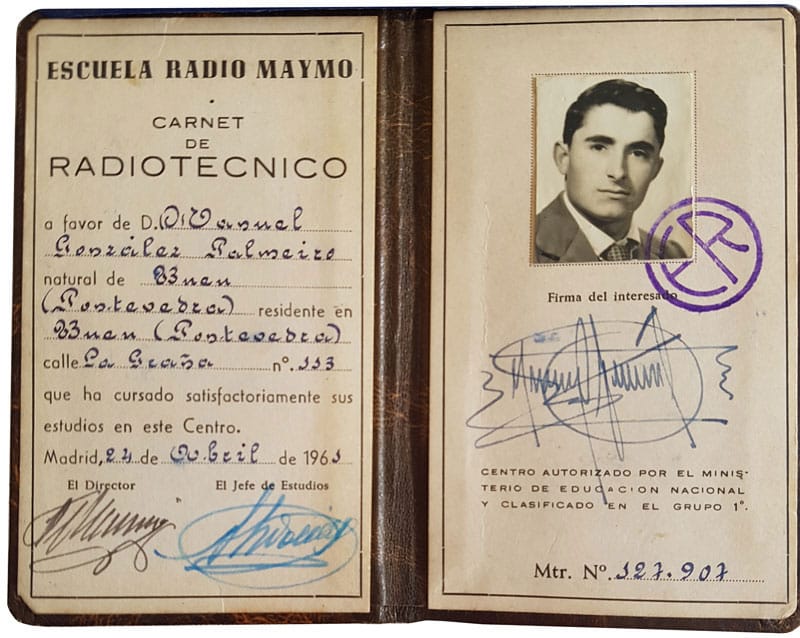
This is a replacement licence issued to Manny. The original was lost when his ship sank in 1966.
In 1961 came my turn to do Military Service. I went to the Navy and, having already obtained my Radio Technician Certificate, I was asked if I would like to do a Radio Telegraphist Course. I said YES PLEASE!
There it was: sending, receiving and the whole lot in REAL LIFE! and REAL EQUIPMENT! The rest is history!
How did you learn CW? Drop me a line and I’ll post the replies in future newsletters.
Video: An easy bug tamer
Answer to brainteaser
In Edition 47 we had a Photo Flashback from Makara Radio in 1947. I asked if anyone knew what Makara Radio had in common with the Featured Key from Edition 46.
The answer is Mercury – the Roman messenger god.
At Makara Radio, there was a mural of Mercury at the entrance. It might still be there, as the station was abandoned but not demolished after it closed in 1996.
The Featured Key was the N2DAN Mercury, which has an image of Mercury engraved on the top.
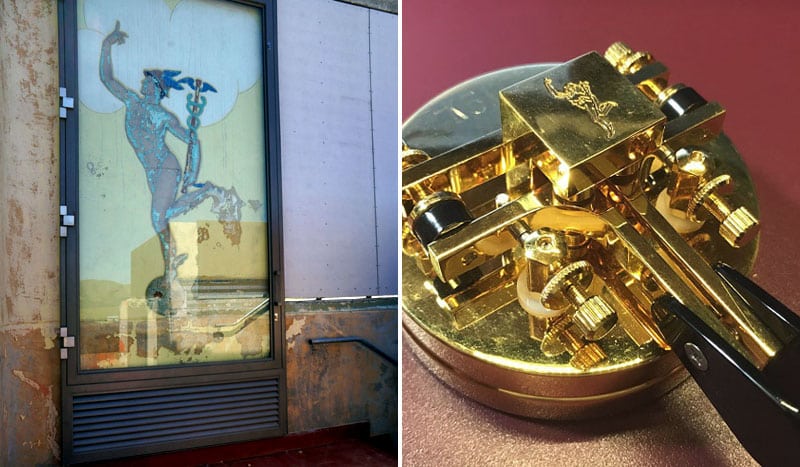
More on that BBC documentary video
In the previous newsletter we had a BBC video about wartime voluntary interceptors. The programme ended with some International Morse being sent on a straight key and heard on a sounder – which seemed strange for a programme about wireless CW.
Some of us were curious about what was being sent in this final segment of the video:
The answer is:
RS THE LISTERNERS RR THE LISTERNERS THE LISTERNERS TS
although the code is not particularly well sent in terms of spacing (or spelling!).
Thanks to Stan ZL3TK and Maurie ZL1FK for the translation.
Net tip
 If you cannot hear the Net, it may be on a different frequency. Just such a case arose this week, when Grant started the Net 1 kHz higher than usual, on 3536.0. This was because there was some CW activity on 3534.84 which was too close to our usual frequency.
If you cannot hear the Net, it may be on a different frequency. Just such a case arose this week, when Grant started the Net 1 kHz higher than usual, on 3536.0. This was because there was some CW activity on 3534.84 which was too close to our usual frequency.
If 3535 is unavailable, NCS will normally look for the first clear frequency UP.
Of course, if you can’t find us within a few kilohertz, then please start the net yourself, as close as possible to 3535.0 kHz.
Remember: If you’re looking for the Net, look up! 🙂
Suggestions?
If you have suggestions on how to make the NZ Net better, or things you’d like to see covered in these updates, please contact ZL1NZ. You might even like to write something for the newsletter.
Thanks for reading, and I hope to see you soon on the NZ Net!
—
Neil Sanderson ZL1NZ, Net Manager
New Zealand Net (NZ NET)
3535.0 kHz at 9pm NZT Mon-Fri



